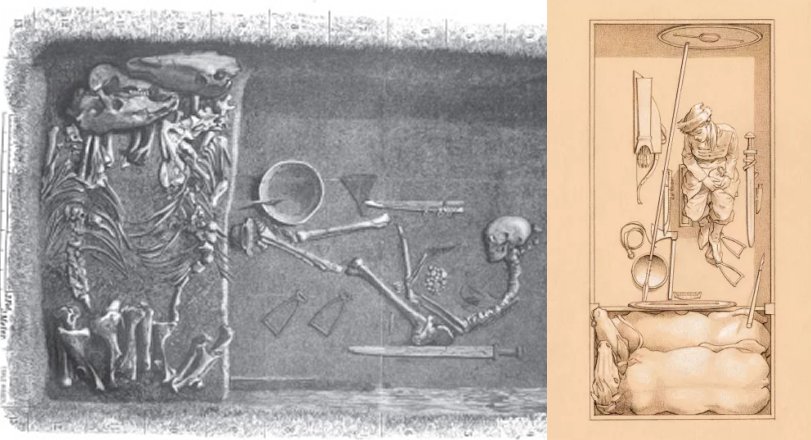Ellen Lloyd - AncientPages.com - It’s time to reevaluate our historical image of Viking women who were much more prominent than previously thought.
It was long assumed that the ancient tomb in the Viking town of Birka belonged to a man of great military importance. Later, comprehensive DNA studies revealed the Birka warrior was, in fact, a woman.
The drawing is a reconstruction of how the Birka grave with the woman originally may have looked. The illustration was made by Þórhallur Þráinsson © Neil Price
The Birka tomb is not the only example that clearly shows women often participated in battles during the Viking Age. There are many similar tombs in Sweden, Norway, and Denmark that offer physical evidence of female Viking warriors.
“We now have about 30 women burials with weapons, mainly from Norway but also from Sweden and Denmark. In addition to the grave at Birka, there is one in Norway that appears to be a women's grave with complete weapons equipment, says Leszek Gardela, doctor and visiting scientist at the University of Bergen.
At Gamla Uppsala, one of the most important, sacred ancient Viking and Pagan sites in Sweden archaeologists discovered two tombs with skeletons of women buried with weapons.
Image source
According to archaeologist Kristina Ekero Eriksson, this doesn’t prove these two women were Viking warriors, but it’s obvious these weapons were used for protection.
Previous archaeological discoveries reveal Viking children were buried with extremely sharp knives.
The purpose of placing these artifacts in the tombs is not entirely clear, but one possibility is that the knives should help the little ones in their afterlife.
Perhaps Vikings buried their children with knives because they thought it was an indispensable tool that one must carry when entering Valhalla. Located in Asgard, Valhalla was the home of the fallen Vikings who died in battle and the kingdom of the Norse god Odin.
Nevertheless, this discovery is surprising to archaeologists, but it confirms the theory that the line between childhood and adulthood was very thin during the Viking Age.
Archaeologists have also discovered several tombs belonging to Viking children containing other weapons such as shields and miniature witches.
Miniature witches were common in young boys' graves but they have now also been found in a girl's grave in Norway.
“Axes had great symbolic value in the Vikings' world. They were used to build ships, travel houses, cook dinner. However, they could also be used as weapons. We know from Norwegian Viking tombs that women sometimes got axes. And those axes served as status and power symbols”, says Leszek Gardela.
In Norse mythology, there are many stories relating the tremendous power of the Völva who was a powerful female shaman and seer.
Left: The buried seeress from Fyrkat – reconstruction drawing by Thomas Hjejle Bredsdorff. Image credit: National Museum of Denmark - Right: A so-called box brooch from Gotland was also present in the grave. The völva apparently re-used the hollow brooch as a container for “white lead”. White lead is a white dye, which for more than 2000 years has been used in medicine - in skin ointments, for example. It is poisonous in its concentrated form. Image credit: National Museum of Denmark
Researchers couldn’t decide whether she was only a mythological figure or a real historical figure. This question was answered when a very mysterious grave was discovered in Denmark. What is especially interesting about this particular discovery is that it seems this was the resting place of a Völva. Several puzzling ancient artifacts were found in the tomb that indicates whoever was buried here was by no means an ordinary person.
Women who engaged in sorcery held a high status in the Viking society and they were respected because they could predict the future, cure and cause illness and help warriors on the battlefield with their magical power.
Mythical shieldmaidens did exist and archaeologists have found evidence female fighters might have its roots in actual historical events.
Written by Ellen Lloyd – AncientPages.com
Copyright © AncientPages.com & Ellen Lloyd All rights reserved. This material may not be published, broadcast, rewritten or redistributed in whole or part without the express written permission of AncientPages.com and Ellen Lloyd







